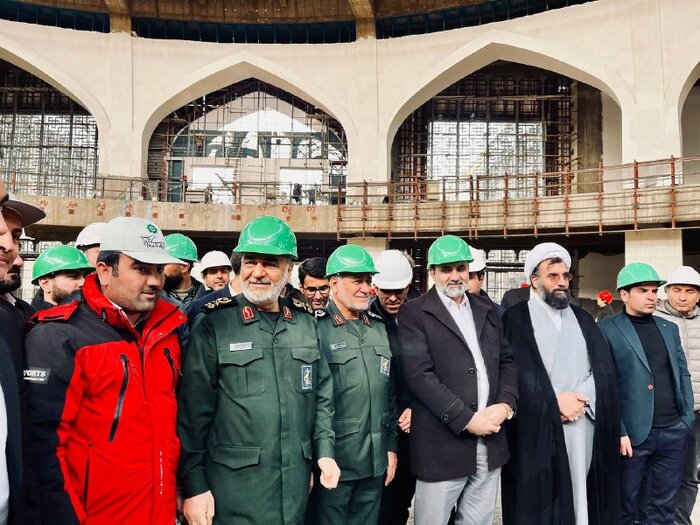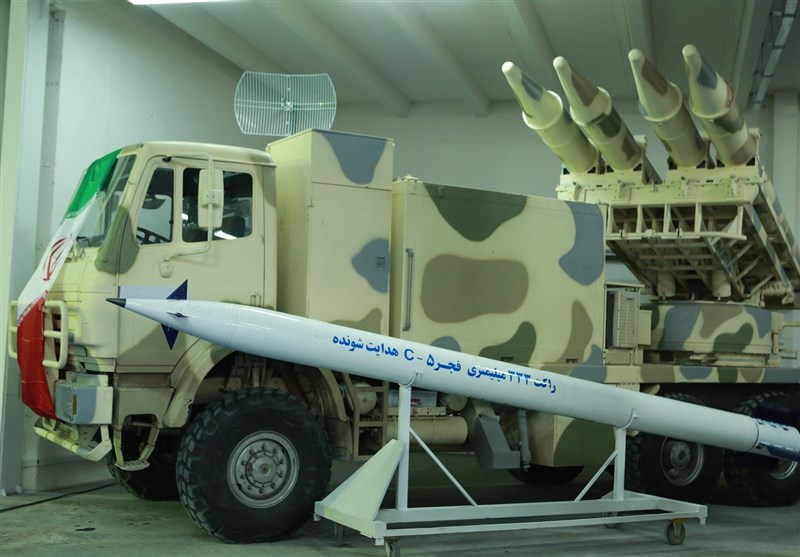
Iran’s Supreme Leader Ali Khamenei speaks at the Imam Khomeini Hussainiyah on 24 February 2024.
“Western civilization has revealed its true nature. Despite their preaching about humanity and human rights, Western civilization has shown itself to be deceitful, hypocritical, and filled with lies.”
For Iran’s Supreme Leader Ali Khamenei, the conflict between Iran and the West is ideological. Khamenei, in an address to the Participants of the Second Congress for the Commemoration of the 24,000 Martyrs of Khuzestan Province, used his speech to lionize their sacrifice as representing the best of Iranian solidarity and piety. He suggested the fighting in Khuzestan during the 1980-1988 Iran-Iraq war gave birth to “a widespread cultural movement” that helped define Iran.[i] Khamenei further argued that the United States has sought to undermine Iran’s development for ideological reasons.[ii] Khamenei assured his audience, however, that Iran’s revolutionary vision was winning. He conflated the progressive turn against Israel with an acceptance of Islam. He stated “Many young people in Western countries, in America and Europe, have started reading the Quran in order to see what… has inspired the people who believe in it to be able to demonstrate this kind of resistance.” In his mind, Gaza is a symbol of a dispute not over sovereignty, but rather ground zero in a clash between civilizations. Khamenei doubles down on this concept and argues that while the United States views itself as the main pillar of liberalism and democracy, “They are neither liberal nor democratic. They are liars,” he explains. “Western civilization and its misguided values” cannot prevail, he argues, for they are inimically opposed to “culture based on truth and the correct reasoning of Islam” that Iran represents. Khamenei’s antagonism to Western civilization and liberalism suggests he envisions Iran to be in perpetual war and as such, will continue to invest in the weaponry necessary to fight this ideological war without end.
OE Insight Summary:
IRN’s Supreme Leader Ali Khamenei frames perpetual conflict with the West as being fundamentally ideological in nature.
Sources:
“دیدار دستاندرکاران دومین کنگره ۲۴ هزار شهید استان خوزستان با رهبر انقلاب”(The Participants of the Second Congress for the Commemoration of the 24,000 Martyrs of Khuzestan Province Met with the Leader of the Revolution),” Khamenei.ir (Supreme Leader Ali Khamenei’s personal website), 24 February 2024.
Western civilization has revealed its true nature. Despite their preaching about humanity and human rights, Western civilization has shown itself to be deceitful, hypocritical, and filled with lies. They oppose the execution of a criminal. For instance, when a murderer who has killed several people is to face retribution and has been given the death penalty, they start raising a commotion against his execution and saying that execution is bad. However, when 30,000 people have been executed by the Zionist regime over the course of three or four months, they close their eyes as if nothing has happened. Some of them, not even all of them, raise the question, “Why is Israel doing these things and slaughtering people.” They say this verbally, but in practice, they continue to support [the Zionist regime], providing them with weapons and necessary goods.
The United States shamelessly vetoes the resolution for a ceasefire for stopping the bombing of the people for the umpteenth time. Western civilization has shown itself here. This is the true nature of Western civilization. Western culture, Western civilization, and these well-dressed Western politicians, this is their true nature. On the outside, they appear with a smile on their faces, but on the inside, they are like a rabid dog and a bloodthirsty wolf. This is the true nature of Western civilization. This is the liberal democracy of the West. They are neither liberal nor democratic. They are liars. They do what they want with their hypocrisy. We hope that, God willing, people around the world will gain a better understanding of the facts in these various events and learn more about Islam and the West. And we are certain, we are sure, that this Western civilization and its misguided values will not prevail. It will not continue, and, God willing, the culture based on truth and the correct reasoning of Islam will ultimately triumph over all of these. That day will come soon, by the will of God.
Notes:
[i] Khomeini outlined religious arguments for clerical rule in a series of lectures delivered in 1970 in Najaf, Iraq. These were latter compiled and published as Hukumat-e Islami (Islamic Government). His exegesis, however, did not detail how “Guardianship of the Jurists” would work in a practical sense. q
[ii] Khomeini’s position is historically inaccurate, or at least subject to debate. The 1979 hostage crisis occurred nine months after Khomeini’s Islamic Revolution succeeded in part because the Carter administration maintained the U.S. embassy in Tehran in order to negotiate rapprochement with the new regime. See, Michael Rubin, Dancing with the Devil: The Perils of Engaging Rogue Regimes. New York: Encounter, 2014.
Image Information:
Image: Iran’s Supreme Leader Ali Khamenei speaks at the Imam Khomeini Hussainiyah on 24 February 2024.
Source: https://idc0-cdn0.khamenei.ir/ndata/news/55340/C/14021205_6455340.jpg
Attribution: Khamenei.ir



